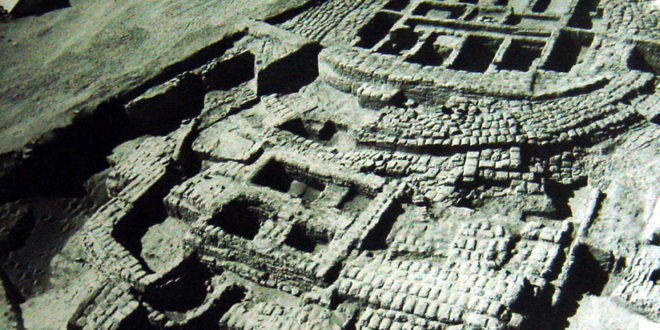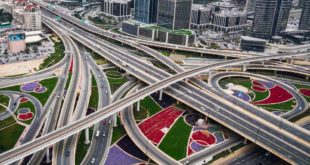The destination of visitors and tourists during the most beautiful winter campaign in the world.
• Hili archaeological site in Al Ain .. a complex dating back to the Bronze Age.
• Jebel Hafeet tombs in Al Ain.. Hundreds of stone tombs built in the form of honey bee cells dating back 5,000 years.
• Baynunah fossil sites.. geological formations of a large river in Abu Dhabi approximately 6 to 8 million years ago.
Baynunah Camel Site. Preserved remains of wild camels dating back 6,000 years.
• Saruq Al-Hadid in Dubai.. A site that provides evidence of human activity dating back 5,000 years.
• Hatta archaeological area.. 28 tombs with circular architectural planning in the manner of “Umm al-Nar”.
• Al Sufouh archaeological site.. Human settlements in Dubai dating back to the third millennium BC.
• “Jumeirah Archaeological”… A site that takes its visitors back to the time of the Abbasid Caliphate between the 9th and 11th centuries.
• Jabal Al Faya in Sharjah.. an archaeological site that includes groups dating back to 125 thousand years.
• Al-Mowaihat archaeological area.. Antiques and ancient artefacts dating back to 2500 BC.
• The role in Umm Al Quwain.. a witness to a civilization dating back to the third millennium BC.
• The “Shamel” site in Ras Al Khaimah includes the largest group of megalithic burials in the southeast of the Arabian Peninsula, which date back to prehistoric times.
…………………………………….
Dubai, January 31: The archaeological sites in the UAE narrate the chapters of an authentic civilization that is rooted in the depths of history to tell the story of an ancient hero whose hero is the ancient Emirati man, where the layers of the land of the UAE store archaeological treasures dating back to time periods and ancient eras, embodying the journey of searching for a living between different regions The state, where the ancient ancestors left behind a great legacy that excavation missions seek to discover, study and paint a picture of these civilizations.
The UAE attaches great importance to archaeological sites and historical monuments, as they embody the memory of peoples and societies, in addition to being considered one of the most important elements that chronicle the past of peoples, as the archaeological discoveries that abound in the country, some of which date back more than 8,500 years, reflect the nature of the civilizations that flocked to It has since ancient times.
Of course, a visit to the Emirates is not complete without visiting its archaeological sites and historical museums, which embody a human masterpiece that recorded bright pages of human history. At the same time, it is considered a witness to the ancient traditions and the aesthetics of human achievement in all aspects of life, which makes these sites a window on heritage, from which young people find their way to the future.
The country has strengthened many archaeological sites and museums with many logistical services at the level of the hotel and hospitality sector, in addition to a list of entertainment options, which increases the attractiveness of these sites and makes them an ideal choice, whether for visitors from within the country or tourists from abroad, during the campaign of the most beautiful winter in the world and throughout the year. .
Hili archaeological site.
The largest archaeological site of the Bronze Age in the UAE is located in the Hili area in the city of Al Ain. It dates back to the beginning of the third millennium BC and continued until the beginning of the second millennium BC without interruption.
This site provides an overview of the Bronze and Iron Ages in the city of Al Ain, with burials, houses, castles and irrigation systems. Birth), as the first agricultural village is located in Al-Hili site No. (8), and it dates back to 3,000 BC.
Al-Hili settlement expanded between 2,500 and 2,000 BC. This period was called the “Umm al-Nar period” after the name of the island located on the coast of Abu Dhabi, where the remains of this civilization were found for the first time.
The site includes the largest collection of tombs and buildings dating back to this period in the country, and a number of these buildings dating back to the Bronze Age are located in the Hili Archaeological Park, and are open to visitors.
Cemetery of Jebel Hafeet.
At the foot of Jebel Hafeet sit hundreds of stone tombs built in the shape of honeycombs, inscribed on the UNESCO World Heritage List, which tell the story of the first inhabitants of Al Ain 5,000 years ago. Excavations in this region have revealed many artifacts confirming trade links with Mesopotamia (Iraq) and the Indus Valley (Pakistan and India).
These tombs, which were built over a period of 500 years between 3,000 and 2,500 BC, date to the beginning of the Bronze Age in the UAE, as excavations carried out by the Danish mission in 1959 showed evidence of archaeological remains such as ceramic vessels and copper artifacts. Which indicates the flourishing of maritime trade at that time throughout the Persian Gulf.
Jebel Hafeet Desert Park offers guided tours to explore this ancient archaeological area.
Baynunah fossil sites.
The effects of the Baynunah fossil sites show that the nature and environment of the Al Dhafra region in the Emirate of Abu Dhabi approximately 6 to 8 million years ago was completely different from today, as this region embraced a large river thanks to which many animals lived, such as: elephants, hippos, giraffes, monkeys, predators and ostriches. and crocodiles.
Fossil traces of these animals were found in the Baynunah geological formation, which was formed thanks to river sediments, such as: sand, gravel and clay. Such fossil traces can also be found today in a series of hills along the coast of the Al Dhafra region, as well as in the heart of the desert.
The Baynunah camel site contains preserved remains of wild camels that were hunted approximately 6,000 years ago, long before humans domesticated these animals.
The study of this archaeological site helps
 Media ININ Economy We Trust
Media ININ Economy We Trust








